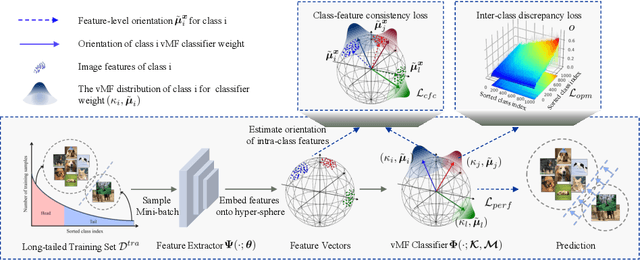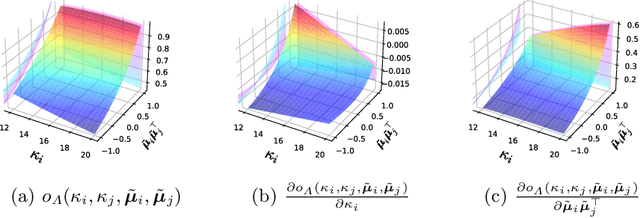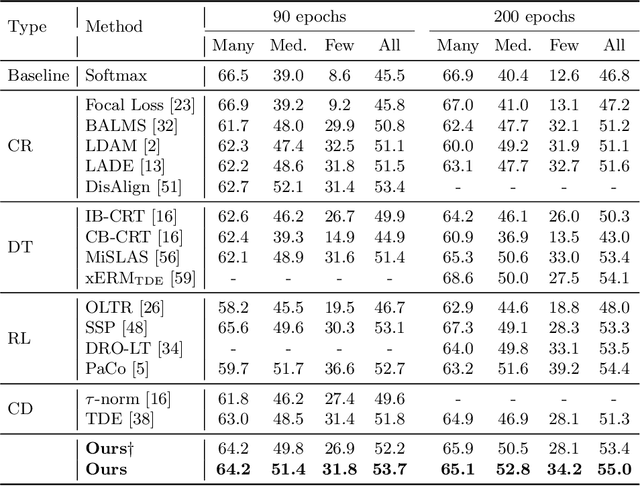Siming Fu
CustomVideoX: 3D Reference Attention Driven Dynamic Adaptation for Zero-Shot Customized Video Diffusion Transformers
Feb 10, 2025Abstract:Customized generation has achieved significant progress in image synthesis, yet personalized video generation remains challenging due to temporal inconsistencies and quality degradation. In this paper, we introduce CustomVideoX, an innovative framework leveraging the video diffusion transformer for personalized video generation from a reference image. CustomVideoX capitalizes on pre-trained video networks by exclusively training the LoRA parameters to extract reference features, ensuring both efficiency and adaptability. To facilitate seamless interaction between the reference image and video content, we propose 3D Reference Attention, which enables direct and simultaneous engagement of reference image features with all video frames across spatial and temporal dimensions. To mitigate the excessive influence of reference image features and textual guidance on generated video content during inference, we implement the Time-Aware Reference Attention Bias (TAB) strategy, dynamically modulating reference bias over different time steps. Additionally, we introduce the Entity Region-Aware Enhancement (ERAE) module, aligning highly activated regions of key entity tokens with reference feature injection by adjusting attention bias. To thoroughly evaluate personalized video generation, we establish a new benchmark, VideoBench, comprising over 50 objects and 100 prompts for extensive assessment. Experimental results show that CustomVideoX significantly outperforms existing methods in terms of video consistency and quality.
A Remote Sensing Image Change Detection Method Integrating Layer Exchange and Channel-Spatial Differences
Jan 19, 2025



Abstract:Change detection in remote sensing imagery is a critical technique for Earth observation, primarily focusing on pixel-level segmentation of change regions between bi-temporal images. The essence of pixel-level change detection lies in determining whether corresponding pixels in bi-temporal images have changed. In deep learning, the spatial and channel dimensions of feature maps represent different information from the original images. In this study, we found that in change detection tasks, difference information can be computed not only from the spatial dimension of bi-temporal features but also from the channel dimension. Therefore, we designed the Channel-Spatial Difference Weighting (CSDW) module as an aggregation-distribution mechanism for bi-temporal features in change detection. This module enhances the sensitivity of the change detection model to difference features. Additionally, bi-temporal images share the same geographic location and exhibit strong inter-image correlations. To construct the correlation between bi-temporal images, we designed a decoding structure based on the Layer-Exchange (LE) method to enhance the interaction of bi-temporal features. Comprehensive experiments on the CLCD, PX-CLCD, LEVIR-CD, and S2Looking datasets demonstrate that the proposed LENet model significantly improves change detection performance. The code and pre-trained models will be available at: https://github.com/dyzy41/lenet.
RestorerID: Towards Tuning-Free Face Restoration with ID Preservation
Nov 21, 2024Abstract:Blind face restoration has made great progress in producing high-quality and lifelike images. Yet it remains challenging to preserve the ID information especially when the degradation is heavy. Current reference-guided face restoration approaches either require face alignment or personalized test-tuning, which are unfaithful or time-consuming. In this paper, we propose a tuning-free method named RestorerID that incorporates ID preservation during face restoration. RestorerID is a diffusion model-based method that restores low-quality images with varying levels of degradation by using a single reference image. To achieve this, we propose a unified framework to combine the ID injection with the base blind face restoration model. In addition, we design a novel Face ID Rebalancing Adapter (FIR-Adapter) to tackle the problems of content unconsistency and contours misalignment that are caused by information conflicts between the low-quality input and reference image. Furthermore, by employing an Adaptive ID-Scale Adjusting strategy, RestorerID can produce superior restored images across various levels of degradation. Experimental results on the Celeb-Ref dataset and real-world scenarios demonstrate that RestorerID effectively delivers high-quality face restoration with ID preservation, achieving a superior performance compared to the test-tuning approaches and other reference-guided ones. The code of RestorerID is available at \url{https://github.com/YingJiacheng/RestorerID}.
Resolving Multi-Condition Confusion for Finetuning-Free Personalized Image Generation
Sep 26, 2024



Abstract:Personalized text-to-image generation methods can generate customized images based on the reference images, which have garnered wide research interest. Recent methods propose a finetuning-free approach with a decoupled cross-attention mechanism to generate personalized images requiring no test-time finetuning. However, when multiple reference images are provided, the current decoupled cross-attention mechanism encounters the object confusion problem and fails to map each reference image to its corresponding object, thereby seriously limiting its scope of application. To address the object confusion problem, in this work we investigate the relevance of different positions of the latent image features to the target object in diffusion model, and accordingly propose a weighted-merge method to merge multiple reference image features into the corresponding objects. Next, we integrate this weighted-merge method into existing pre-trained models and continue to train the model on a multi-object dataset constructed from the open-sourced SA-1B dataset. To mitigate object confusion and reduce training costs, we propose an object quality score to estimate the image quality for the selection of high-quality training samples. Furthermore, our weighted-merge training framework can be employed on single-object generation when a single object has multiple reference images. The experiments verify that our method achieves superior performance to the state-of-the-arts on the Concept101 dataset and DreamBooth dataset of multi-object personalized image generation, and remarkably improves the performance on single-object personalized image generation. Our code is available at https://github.com/hqhQAQ/MIP-Adapter.
LLaVA-MoD: Making LLaVA Tiny via MoE Knowledge Distillation
Aug 28, 2024Abstract:We introduce LLaVA-MoD, a novel framework designed to enable the efficient training of small-scale Multimodal Language Models (s-MLLM) by distilling knowledge from large-scale MLLM (l-MLLM). Our approach tackles two fundamental challenges in MLLM distillation. First, we optimize the network structure of s-MLLM by integrating a sparse Mixture of Experts (MoE) architecture into the language model, striking a balance between computational efficiency and model expressiveness. Second, we propose a progressive knowledge transfer strategy to ensure comprehensive knowledge migration. This strategy begins with mimic distillation, where we minimize the Kullback-Leibler (KL) divergence between output distributions to enable the student model to emulate the teacher network's understanding. Following this, we introduce preference distillation via Direct Preference Optimization (DPO), where the key lies in treating l-MLLM as the reference model. During this phase, the s-MLLM's ability to discriminate between superior and inferior examples is significantly enhanced beyond l-MLLM, leading to a better student that surpasses its teacher, particularly in hallucination benchmarks. Extensive experiments demonstrate that LLaVA-MoD outperforms existing models across various multimodal benchmarks while maintaining a minimal number of activated parameters and low computational costs. Remarkably, LLaVA-MoD, with only 2B activated parameters, surpasses Qwen-VL-Chat-7B by an average of 8.8% across benchmarks, using merely 0.3% of the training data and 23% trainable parameters. These results underscore LLaVA-MoD's ability to effectively distill comprehensive knowledge from its teacher model, paving the way for the development of more efficient MLLMs. The code will be available on: https://github.com/shufangxun/LLaVA-MoD.
MARS: Mixture of Auto-Regressive Models for Fine-grained Text-to-image Synthesis
Jul 11, 2024



Abstract:Auto-regressive models have made significant progress in the realm of language generation, yet they do not perform on par with diffusion models in the domain of image synthesis. In this work, we introduce MARS, a novel framework for T2I generation that incorporates a specially designed Semantic Vision-Language Integration Expert (SemVIE). This innovative component integrates pre-trained LLMs by independently processing linguistic and visual information, freezing the textual component while fine-tuning the visual component. This methodology preserves the NLP capabilities of LLMs while imbuing them with exceptional visual understanding. Building upon the powerful base of the pre-trained Qwen-7B, MARS stands out with its bilingual generative capabilities corresponding to both English and Chinese language prompts and the capacity for joint image and text generation. The flexibility of this framework lends itself to migration towards any-to-any task adaptability. Furthermore, MARS employs a multi-stage training strategy that first establishes robust image-text alignment through complementary bidirectional tasks and subsequently concentrates on refining the T2I generation process, significantly augmenting text-image synchrony and the granularity of image details. Notably, MARS requires only 9% of the GPU days needed by SD1.5, yet it achieves remarkable results across a variety of benchmarks, illustrating the training efficiency and the potential for swift deployment in various applications.
MS-Diffusion: Multi-subject Zero-shot Image Personalization with Layout Guidance
Jun 11, 2024Abstract:Recent advancements in text-to-image generation models have dramatically enhanced the generation of photorealistic images from textual prompts, leading to an increased interest in personalized text-to-image applications, particularly in multi-subject scenarios. However, these advances are hindered by two main challenges: firstly, the need to accurately maintain the details of each referenced subject in accordance with the textual descriptions; and secondly, the difficulty in achieving a cohesive representation of multiple subjects in a single image without introducing inconsistencies. To address these concerns, our research introduces the MS-Diffusion framework for layout-guided zero-shot image personalization with multi-subjects. This innovative approach integrates grounding tokens with the feature resampler to maintain detail fidelity among subjects. With the layout guidance, MS-Diffusion further improves the cross-attention to adapt to the multi-subject inputs, ensuring that each subject condition acts on specific areas. The proposed multi-subject cross-attention orchestrates harmonious inter-subject compositions while preserving the control of texts. Comprehensive quantitative and qualitative experiments affirm that this method surpasses existing models in both image and text fidelity, promoting the development of personalized text-to-image generation.
TrainerAgent: Customizable and Efficient Model Training through LLM-Powered Multi-Agent System
Nov 23, 2023Abstract:Training AI models has always been challenging, especially when there is a need for custom models to provide personalized services. Algorithm engineers often face a lengthy process to iteratively develop models tailored to specific business requirements, making it even more difficult for non-experts. The quest for high-quality and efficient model development, along with the emergence of Large Language Model (LLM) Agents, has become a key focus in the industry. Leveraging the powerful analytical, planning, and decision-making capabilities of LLM, we propose a TrainerAgent system comprising a multi-agent framework including Task, Data, Model and Server agents. These agents analyze user-defined tasks, input data, and requirements (e.g., accuracy, speed), optimizing them comprehensively from both data and model perspectives to obtain satisfactory models, and finally deploy these models as online service. Experimental evaluations on classical discriminative and generative tasks in computer vision and natural language processing domains demonstrate that our system consistently produces models that meet the desired criteria. Furthermore, the system exhibits the ability to critically identify and reject unattainable tasks, such as fantastical scenarios or unethical requests, ensuring robustness and safety. This research presents a significant advancement in achieving desired models with increased efficiency and quality as compared to traditional model development, facilitated by the integration of LLM-powered analysis, decision-making, and execution capabilities, as well as the collaboration among four agents. We anticipate that our work will contribute to the advancement of research on TrainerAgent in both academic and industry communities, potentially establishing it as a new paradigm for model development in the field of AI.
Uniformly Distributed Category Prototype-Guided Vision-Language Framework for Long-Tail Recognition
Aug 24, 2023Abstract:Recently, large-scale pre-trained vision-language models have presented benefits for alleviating class imbalance in long-tailed recognition. However, the long-tailed data distribution can corrupt the representation space, where the distance between head and tail categories is much larger than the distance between two tail categories. This uneven feature space distribution causes the model to exhibit unclear and inseparable decision boundaries on the uniformly distributed test set, which lowers its performance. To address these challenges, we propose the uniformly category prototype-guided vision-language framework to effectively mitigate feature space bias caused by data imbalance. Especially, we generate a set of category prototypes uniformly distributed on a hypersphere. Category prototype-guided mechanism for image-text matching makes the features of different classes converge to these distinct and uniformly distributed category prototypes, which maintain a uniform distribution in the feature space, and improve class boundaries. Additionally, our proposed irrelevant text filtering and attribute enhancement module allows the model to ignore irrelevant noisy text and focus more on key attribute information, thereby enhancing the robustness of our framework. In the image recognition fine-tuning stage, to address the positive bias problem of the learnable classifier, we design the class feature prototype-guided classifier, which compensates for the performance of tail classes while maintaining the performance of head classes. Our method outperforms previous vision-language methods for long-tailed learning work by a large margin and achieves state-of-the-art performance.
Towards Calibrated Hyper-Sphere Representation via Distribution Overlap Coefficient for Long-tailed Learning
Aug 22, 2022



Abstract:Long-tailed learning aims to tackle the crucial challenge that head classes dominate the training procedure under severe class imbalance in real-world scenarios. However, little attention has been given to how to quantify the dominance severity of head classes in the representation space. Motivated by this, we generalize the cosine-based classifiers to a von Mises-Fisher (vMF) mixture model, denoted as vMF classifier, which enables to quantitatively measure representation quality upon the hyper-sphere space via calculating distribution overlap coefficient. To our knowledge, this is the first work to measure representation quality of classifiers and features from the perspective of distribution overlap coefficient. On top of it, we formulate the inter-class discrepancy and class-feature consistency loss terms to alleviate the interference among the classifier weights and align features with classifier weights. Furthermore, a novel post-training calibration algorithm is devised to zero-costly boost the performance via inter-class overlap coefficients. Our method outperforms previous work with a large margin and achieves state-of-the-art performance on long-tailed image classification, semantic segmentation, and instance segmentation tasks (e.g., we achieve 55.0\% overall accuracy with ResNetXt-50 in ImageNet-LT). Our code is available at https://github.com/VipaiLab/vMF\_OP.
 Add to Chrome
Add to Chrome Add to Firefox
Add to Firefox Add to Edge
Add to Edge